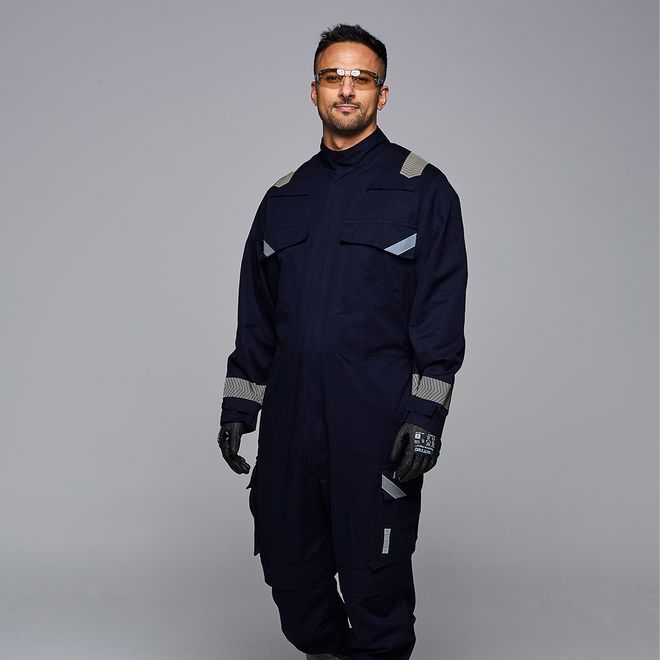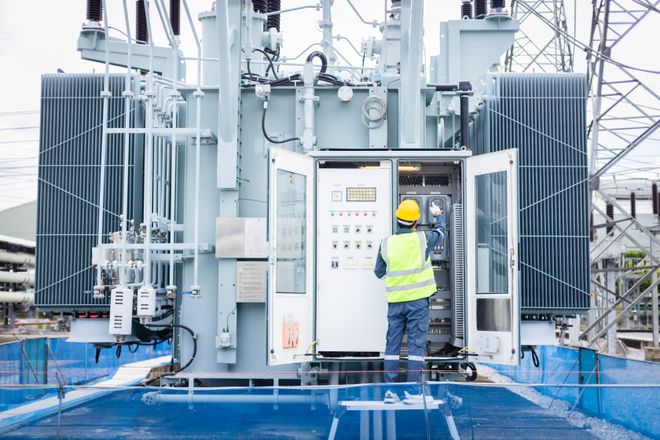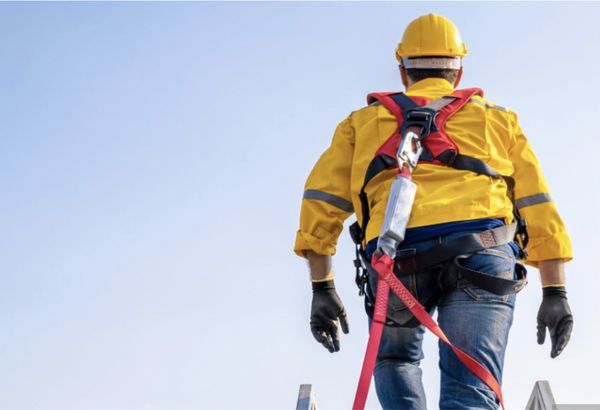15 November 2025
when is arc flash protection needed, and which industries are affected?
Arc flash incidents are among the most serious electrical hazards in the workplace. Equipment failures and exposed live parts can cause electrical energy to flash through the air in a violent burst. When this happens, temperatures can soar above 19,000 °C, creating a plasma ball and violent explosion. Anyone nearby may be struck by the intense light and powerful pressure wave that follows. In some cases, superheated debris and molten metal can also be projected outward.
That is why employers must provide arc flash protection in industries where electrical hazards are present. Certified arc flash clothing and PPE protect workers against burns and injury.
Below, discover when arc flash clothing is required, which sectors are most at risk, and how employers can select the right garments. We’ll also discuss best practices for prevention and answer common questions.
understanding arc flash and arc-rated clothing
It’s important for employers to understand what an arc flash is and why ordinary workwear isn’t enough. When you understand how general flame-resistant fabrics and properly tested arc flash clothing differ, you can make better informed decisions about safety and compliance.
what is an arc flash?
An arc flash occurs when electricity discharges through the air between conductors or to ground. It is not a simple spark. It is a high-energy event that can reach the surface temperature of the sun. Workers may be exposed to:
- Thermal radiation – causing deep burns within fractions of a second.
- Pressure waves – capable of rupturing eardrums and damaging lungs.
- Molten metal and shrapnel – projected at high speed from vaporised conductors.
- Blinding light – leading to permanent eye damage.
An arc flash can be caused by insulation failure, dust accumulation, equipment corrosion, loose connections, or accidental contact with live parts. Even routine maintenance can create conditions for a flash.


arc flash-rated clothing vs. flame-resistant gear
Not all flame-resistant garments are the same. Arc flash clothing (sometimes called arc-rated or AR clothing) is specifically tested to withstand the thermal energy of an arc event. A simpler way to remember this is that all arc-rated fabrics are flame resistant, but not all flame-resistant fabrics are arc-rated.
Arc flash garments are assigned an arc rating, measured in calories per square centimetre (cal/cm²). This shows the energy level a fabric can resist before the wearer would sustain a second-degree burn. Ratings include:
- ATPV (Arc Thermal Performance Value): energy at which there is a 50 % chance of second-degree burn.
- ELIM (Incident Energy Limit): threshold with a 0 % chance of second-degree burn.
- EBT (Energy Breakopen Threshold): point where fabric ruptures under arc stress.
These values show that the clothing has been tested to standards such as EN IEC 61482-1-1 (open arc), EN IEC 61482-1-2 (box test), NFPA 70E, and ASTM F1506.
when is arc flash protection required?
Employers are legally required to provide protection when risk assessments show that workers could be exposed to arc flash risks. A formal arc flash risk assessment must evaluate:
- The incident energy possible at each piece of equipment.
- The likelihood of an arc event during a specific task.
- The distance between workers and live components.
Protection is needed whenever tasks involve working on or near energised electrical systems, including:
- Testing live circuits.
- Racking circuit breakers.
- Operating switches and disconnects.
- Maintenance of distribution boards, switchgear, and motor control centres.
arc flash hazard categories
To guide PPE selection, international standards group protection into four hazard categories.
compliance obligations
Employer responsibilities around arc flash protection are not optional. They are set out in international standards and national safety laws, including EN IEC 61482, NFPA 70E, OSHA regulations, and the UK’s Electricity at Work Regulations 1989. These require a structured, documented approach to risk and control.
Employers must:
- Supply certified arc flash PPE clothing that matches the hazard category defined in the risk assessment. Garments must carry recognised markings (CE, UKCA, ASTM, or NFPA) proving they have passed arc testing.
- Train workers in the correct use, limitations, and care of PPE so they understand both how to wear it and when it does not offer sufficient protection.
- Carry out and document risk assessments using incident energy calculations, then update them whenever systems or tasks change. Records are essential for proving compliance during audits or investigations.
- Provide inclusive sizing and fit so that every employee, regardless of gender or body type, gets PPE that works as intended. Poor-fitting garments can expose skin and limit protection.
Not meeting these obligations can lead to enforcement action from regulators such as the HSE in the UK or OSHA in the US, and legal penalties for non-compliance. Most importantly, it can also result in preventable injuries or fatalities in the workplace.
industries and roles affected by arc flash
Arc flash hazards are found anywhere electricity is generated, distributed, or used in complex systems. Key industries include:
Regardless of sector, employers must ensure PPE meets international standards, is comfortable for long shifts, and is offered in inclusive fits. Closing the gender PPE gap ensures protective equipment functions properly for every worker.
How to choose the right arc flash clothing
Selecting effective arc flash protective equipment involves several steps:
1. Carry out a hazard assessment
- Calculate incident energy at each site.
- Identify the required arc rating (cal/cm²).
2. Select the right arc rating
- Choose garments with ATPV or ELIM above calculated incident energy.
- Always round up to the next higher category.
3. Verify compliance with standards
- Check testing to EN IEC 61482-1-1/-1-2, ASTM F1506, and NFPA 70E.
- Look for CE or UKCA markings on labels.

4. Choose garment types and layers
- Decide between coveralls, jackets, and trousers.
- Use natural-fibre base layers under arc-rated outerwear.
- Layering can increase protection if all layers are certified.
5. Consider environmental factors
- High-visibility for roadside work.
- Water resistance for outdoor tasks.
- Chemical resistance where required.
6. Ensure fit and inclusivity
- Proper sizing ensures comfort and mobility.
- Offer tailored options for both men and women.
7. Plan maintenance and replacement
- Wash separately with mild detergent, no bleach or softeners.
- Air-dry or use low heat.
- Inspect before each use and replace damaged items or every 2–5 years.

best practices to prevent arc flash incidents
PPE is the final safety net. A stronger strategy is to prevent an arc flash from happening at all. These practices contribute towards effective safety culture.
frequently asked questions
Arc flash protective clothing is tested against recognised international standards. These include EN IEC 61482-1-1 (open arc method), EN IEC 61482-1-2 (box test), NFPA 70E in the United States, and ASTM F1506. These standards ensure garments are designed, manufactured, and certified to provide reliable arc flash protection in high-risk industries.
Arc rating is measured in calories per square centimetre (cal/cm²). It shows the amount of thermal energy a fabric can resist before causing a second-degree burn. Testing determines values such as ATPV (Arc Thermal Performance Value) or ELIM (Incident Energy Limit). This gives safety managers a clear benchmark when selecting arc flash PPE clothing.
Yes, most arc flash garments can be safely washed at home if care instructions are followed. Always wash separately using mild detergent and low-temperature settings. Don’t use bleach or fabric softeners, and don’t tumble-drying on high heat. Following manufacturer guidance helps extend garment lifespan and maintain certification.
The typical lifespan of arc flash clothing is two to five years, depending on how frequently it is used, workplace environment, and washing practices. Garments should be inspected before every use for damage, contamination, or signs of wear. Items that no longer meet standards must be replaced immediately to maintain proper arc flash protection.
ATPV (Arc Thermal Performance Value) represents the energy level at which there is a 50 percent chance of second-degree burns. ELIM (Incident Energy Limit) is stricter. It’s the maximum energy where burns will not occur. Both values help employers match arc flash clothing to the risks identified in hazard assessments.
Yes. Even equipment operating at 400–600 volts can produce arc flash events with dangerous energy levels. A proper arc flash risk assessment is essential, because voltage alone does not determine danger. Many low-voltage systems still require certified arc flash protective clothing, especially during testing, switching, or maintenance on live circuits.
Arc flash suits are typically worn by electrical workers exposed to the highest risk levels, such as utility linemen, substation technicians, and high-voltage maintenance staff. They are also used by railway engineers, renewable energy technicians, and some manufacturing workers. These suits provide full-body protection including hood, gloves, and footwear against extreme incident energy.
Alsico designs and supplies certified arc flash clothing that combines compliance, comfort, and inclusivity. Protect your teams by choosing garments that meet standards and fit every worker.
learn more about the environments we supply into

Environments
wearer protection
Protection is weaved into every part of alsico, we build it into everything we do and it drives our every decision. Our protective workwear range covers all high-safety sectors.

Environments
healthcare
We are one of the largest healthcare uniform suppliers in the UK, and are the majority supplier for the new NHS National Healthcare Uniform project.

Environments
workwear
At alsico, we have shown excellence in a wide range of work uniforms, ranging from warehousing to global travel companies and from transportation to construction.

Environments
electrification
Our passion for creating innovative fabrics has positioned us as a key supplier in the exciting new sector of electrical safety clothing, from battery companies to aerospace, to all anti-static environments.

Environments
contamination control
We have developed a specialism in cleanroom clothing and uniforms, delivering exceptional performance in highly controlled environments.

Environments
emergency response
We are always honored to be asked to provide workwear for our emergency services teams. We put our trust in them to help to look after us, and we do our very best in return, delivering performance when it matters.
contact us
